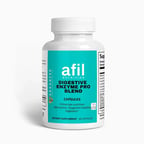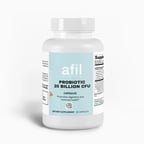Garlic (Fresh, Vegetable)
Fresh garlic’s fructans, allicin, and sulfur compounds may trigger sensitivities. Avoid it for 8 weeks, try garlic-infused oil or herbs, and use supplements like digestive enzymes, probiotics, and quercetin to aid gut healing.
🧄 What is Fresh Garlic?
Garlic is a pungent bulb widely used as a seasoning in global cuisines. Fresh garlic is packed with allicin, a compound that gives it a strong aroma and potential health benefits, including immune support, anti-inflammatory properties, and heart health.
🤔 Why Do I Have an Intolerance to Fresh Garlic?
Fresh garlic intolerance can arise from sensitivity to its potent compounds and high sulfur content:
- Fructans: Garlic is rich in these fermentable fibers, which can cause bloating, gas, or digestive discomfort in individuals with IBS or fructan intolerance.
- Allicin: While beneficial, allicin can irritate the digestive lining in sensitive individuals, causing nausea or discomfort.
- Sulfur compounds: Garlic contains organosulfur compounds that may trigger reactions in those with sulfur sensitivity.
- Histamine release: Garlic can stimulate histamine release, aggravating symptoms in histamine-intolerant individuals.
🛠️ What Can I Do About It?
To manage fresh garlic intolerance, follow these strategies:
- Avoid fresh garlic for at least 8 weeks: This reduces inflammation and allows the digestive system to heal.
- Experiment with alternatives: Use garlic-infused oils, which have flavor without fructans, or replace garlic with herbs like chives or asafoetida.
- Cook garlic thoroughly: Cooking reduces allicin and may make garlic easier to tolerate.
- Watch portion sizes: Small amounts may be tolerated better than large servings after reintroduction.
- Use a food journal: Document symptoms to identify patterns when reintroducing garlic.
💊 Which Supplements Do You Recommend for Intolerance and Inflammation from Fresh Garlic?
Supplements can help alleviate symptoms and promote digestive healing:
- Digestive enzymes: Target fructans and assist in breaking down garlic compounds

- Probiotics: Enhance gut health and help reduce fructan-related discomfort over time.

- Quercetin: Acts as an antihistamine, reducing histamine-related symptoms from garlic.

- Activated charcoal: Binds irritating compounds in the gut for quicker symptom relief.
- L-glutamine: Repairs the gut lining and soothes inflammation caused by sensitivities.

🌟 Why Might I Have an Intolerance to Fresh Garlic but Not Dried Garlic?
Fresh and dried garlic differ in their composition, which can explain varying sensitivities:
- Fructan content: Fresh garlic contains more fructans, which are reduced during the drying process. This makes dried garlic easier to digest for fructan-sensitive individuals.
- Allicin availability: Fresh garlic produces allicin when crushed, but drying reduces allicin levels significantly, lowering its potential irritant effects.
- Sulfur concentration: Sulfur compounds are more potent in fresh garlic, while they diminish when dried.
- Serving size: Dried garlic is often used in smaller quantities, reducing the overall load of reactive compounds compared to fresh garlic.
🍽️ Popular Dishes with Fresh Garlic
- Garlic bread
- Garlic butter shrimp
- Roasted garlic spread
- Garlic chicken
- Garlic-infused soups
🍽️ Alternatives (if tolerated)
- Garlic-infused oil
- Chives
- Green onions
- Shallots
.png?width=100&height=75&name=AFIL%20Logo%20(1).png)